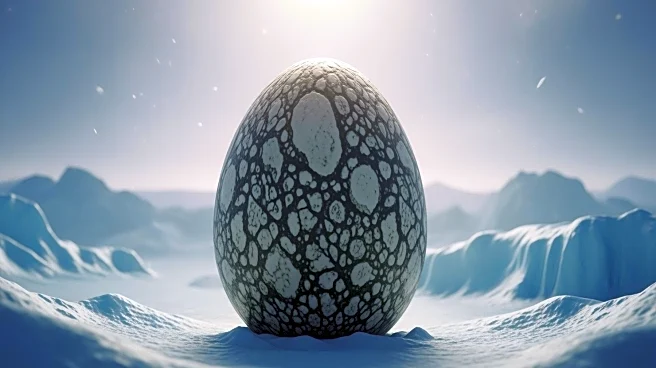What's Happening?
A giant fossilized egg, unearthed in Antarctica and dating back approximately 66 million years, is reshaping scientific understanding of prehistoric marine reptile reproduction. Nicknamed 'The Thing' by
the Chilean team that discovered it, the egg is the largest soft-shelled egg ever found and the second-largest egg of any type on record. Its unique characteristics, including a thin, leathery shell similar to those of modern lizards and snakes, suggest that some massive marine reptiles may have laid eggs rather than giving live birth, as previously assumed. This discovery, made on Seymour Island, has prompted scientists to reconsider the reproductive strategies of ancient marine reptiles.
Why It's Important?
The discovery of this giant egg has significant implications for the study of prehistoric life, particularly in understanding the reproductive behaviors of marine reptiles. It challenges long-held assumptions that these creatures gave live birth, suggesting instead that they may have laid eggs in protected environments. This finding could lead to a reevaluation of the evolutionary history of marine reptiles and their adaptation strategies. Additionally, the preservation of such a delicate fossil in Antarctica highlights the region's potential to provide insights into ancient ecosystems and climate conditions.
Beyond the Headlines
The egg's preservation in Antarctica underscores the unique geological conditions that can protect delicate fossils, offering a window into ancient life that might not survive elsewhere. This discovery also raises questions about the environmental conditions that allowed such large eggs to be laid and hatched in prehistoric times. As researchers continue to explore the site, they may uncover more evidence of how these marine reptiles lived and reproduced, potentially leading to broader insights into the biodiversity and ecological dynamics of the Cretaceous period.












